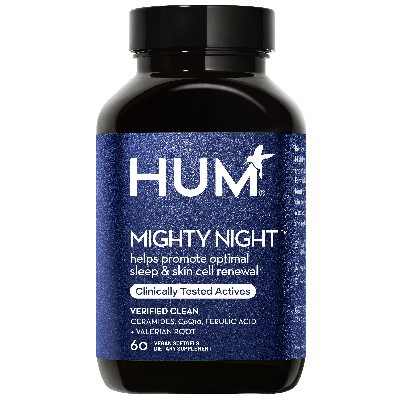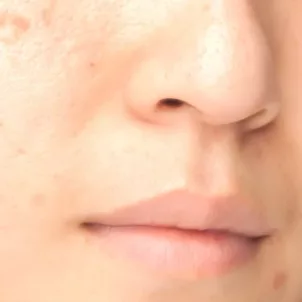So you popped a pimple—now what should you do? Here’s the good news: There are ways to heal your blemish effectively and efficiently. An expert breaks down exactly what to do after popping a pimple.
Pimple popping just might be the biggest guilty pleasure when it comes to skincare—hence the popularity of pimple-popping videos on TikTok and the widely watched TLC show Dr. Pimple Popper, which is primarily focused on dermatologist Dr. Sandra Lee removing and squeezing sizable cysts. Studies even show that the oddly satisfying sensation of popping a pimple is legit and has been detected via brain scans of females watching videos of someone squeezing a zit.
But like many things in life, just because something is enjoyable doesn’t mean it’s actually in your best interest. Michelle Ornstein, esthetician and founder of Enessa Skincare, explains that squeezing your breakout is never a good idea. “Each time you pop a pimple, you are complicating your skin’s natural ability to heal itself and creating new potential problems for your skin,” she says. “It is essential to resist the urge to pick at your skin and squeeze a pimple.”
If you can’t resist the urge (or have already done the damage), she suggests treating it as a one-time problem and to avoid doing it repeatedly each time you have a blemish. Here’s exactly what to do after popping a pimple, according to experts.
What Happens When You Pop A Pimple?

Ornstein explains that when you squeeze a pimple, you’re irritating an already inflamed, infected area—which will most likely lead to further infection. “You are also tearing at the skin, which creates a new problem or new wound, so the skin must then repair its structure where the new issue was created in addition to healing the pimple,” she adds. In terms of timing and the healing process, all skin types are unique and heal differently.
And unfortunately, whenever you touch your face, you’re introducing new bacteria. “Wherever your hands have been, those germs will now be introduced to your face,” she explains. “If you are touching an area already traumatized, you are exacerbating an existing problem by creating an opportunity for a new infection to occur.”
She also notes that you may be pushing bacteria deeper into the skin, causing further infection to develop. “Ultimately, you’re not accelerating the healing process by squeezing your skin; you’re delaying the healing process,” she says. There may be long-term repercussions of popping pimples, including permanent acne scarring, more noticeable acne, and more painful acne, according to The American Academy of Dermatology Association. “These unwanted side effects are likely when you pop pimples at home,” they say. “If you push some of the contents inside the pimple deeper into the skin, which often happens, you increase inflammation. This can lead to more-noticeable acne—some people develop acne scars and pain.”
How to Heal A Popped Pimple

There is no one approach to healing a popped pimple for the simple reason that different things may have happened.
“If your skin is bleeding where you popped the pimple, you would first want to disinfect the skin and then apply one drop of lavender essential oil to help stop the bleeding,” she says. “If the skin is still an open wound, you would need to introduce an anti-bacterial as well as an anti-inflammatory.” It’s also important to keep skin hydrated without blocking pores while your skin is recovering from the trauma, to promote the healing process. Here’s how to heal a popped pimple:
1. Use a Gentle Natural Cleanser
While you may be tempted to use a face wash with harsher acne-targeted ingredients like benzoyl peroxide or salicylic acid, Ornstein suggests opting for a gentler face wash—especially while you have open wounds. Also, keep the water cool. “Avoid washing your face with hot water or taking hot showers, which would open up the pores and the wound itself,” she says. Make sure to keep the area clean by washing every morning and night.
2. Use an Astringent
Wondering what to put on a popped pimple? If you’re dealing with an open wound, you don’t want bacteria to get involved. Disinfect the area using either Witch Hazel or another product, like Enessa’s Tea Tree Hydra-Clear. “This will not only disinfect your skin, but also help keep it hydrated,” she explains.
3. Try Icing Your Skin
If your skin is swollen due to the picking or squeezing, you can apply an ice cube for a few minutes. “This will help reduce the swelling,” she explains. Pro tip: Don’t apply the ice cube directly to your skin, as this can cause irritation. Instead, wrap up the ice cube in a paper towel and apply it to the wound.
4. Use a Spot Treatment
Now it’s time to apply a spot treatment. Ornstein suggests an antibacterial product to soothe the area while speeding the healing process. She likes to use Enessa’s Clove Blemish Control, which contains jojoba, bakuchiol, black cumin seed oil, and other essential oils, which help reduce the appearance of redness and irritation while keeping the area hydrated. Or, if you use a prescription treatment or one with benzoyl peroxide or salicylic acid, now is the time to apply. “For best results, apply at least twice a day,” she says. Another idea? Try a hydrocolloid pimple patch. They’ll help to draw out any remaining gunk while also speeding up the healing process. Plus, they’ll keep the blemish covered, which will encourage you to keep your hands off.
5. Avoid Wearing Makeup on The Affected Area
While you might feel the urge to cover up your popped pimple, Ornstein urges against it if you want your skin to efficiently heal. “You want to let the skin breathe and heal properly without interference,” she explains. Also, avoid using any facial scrubs or masks on the pimple, as it might sting or further irritate the skin.
6. Be Patient With the Healing Process
If you’re wondering how long it takes a popped pimple to heal, you may not love the answer. Unfortunately, healing doesn’t happen overnight. While your skin is recovering, try and leave it alone. If you don’t, you may do even more damage to your skin. “Don’t try to pick the scab that might form, as it will leave your skin with a scar that will take a very long time to fade,” instructs Ornstein. Help boost the healing process by focusing on things that increase skin cell turnover rate. (We’re big fans of HUM Nutrition’s Mighty Night supplement, which helps support nighttime skin cell renewal.)
7. Care For Leftover Scars
Once the wound is no longer open, Ornstein suggests applying Vitamin E to reduce the appearance of scarring. If there is a scar, you can also apply a scar treatment morning and night. Vitamin C serums as well as retinol products will also help to fade the look of acne scars, so add one into your daily routine if you’re concerned about the aftermath of pimple popping.
8. Enlist the Help of A Professional
Prior to popping a pimple, consider consulting an expert (either an esthetician or a dermatologist). Per the AAD, there are different techniques, including acne extraction using sterile instruments, to get rid of blackheads and whiteheads that can be safely performed. Dermatologists can also inject blemishes with corticosteroids, which helps speed the healing process and reduce the chances of scarring. Additionally, in cases of large pimples or painful acne cysts or nodules, experts can use a sterile needle or surgical blade to physically open the blemish and drain the contents. Additionally, a professional can recommend products to help heal a popped pimple as well as put together a skincare routine to help prevent any future breakouts.
9. Look Into the Source of Your Breakouts
Ornstein also stresses the importance of figuring out why you are breaking out in the first place. “It is a good idea to know the source of the acne or pimple,” says Ornstein, who notes that most acne results from sebum overproduction— or too much oil on your skin. That way, you can prevent future outbreaks. “Using a product that regulates or reduces sebum oil production without drying out your skin will create a better environment to facilitate the healing process,” she says. You can also help heal breakout-prone skin from the inside out by incorporating supplements into your routine. HUM Nutrition’s Daily Cleanse, for example, contains green algae, an herbal blend of detoxifiers, and antioxidants and minerals to filter out toxins in the body and help clear skin from within.
Another option? HUM Nutrition’s Skin Squad, a potent blend of pre- and probiotics that help balance the gut microbiome, supporting decreased breakouts and an even skin tone.











